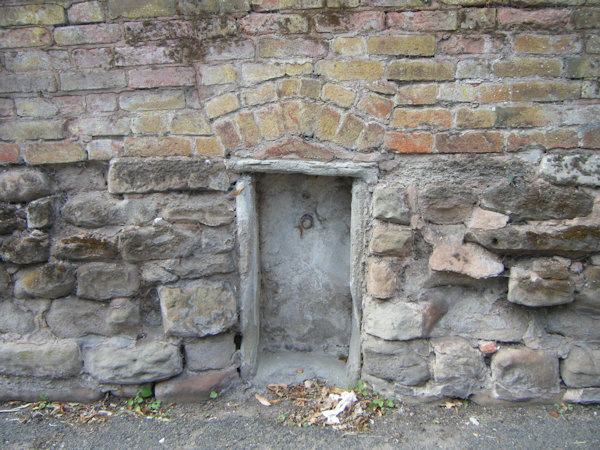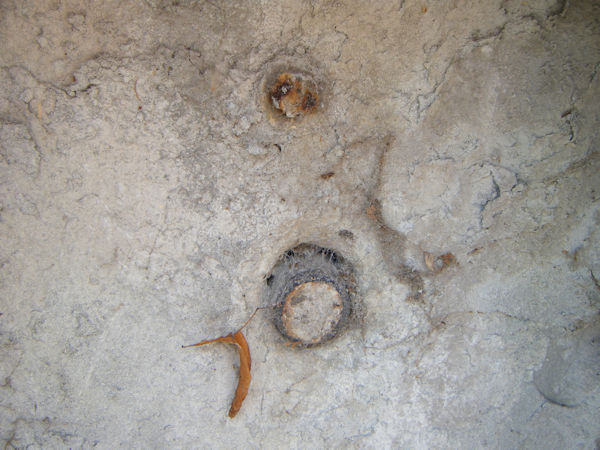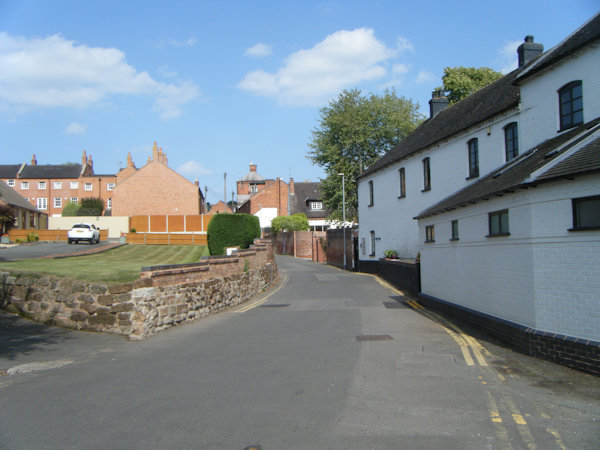 |
 |
 |
HOME - ENGLAND - STAFFORDSHIRE
Dedication: Saint Mary Magdalene? Location: Shaw Lane Status: lost |
During the medieval period, the name "Magdalene" was often pronounced and spelt "Maudlin", a fact that is reflected in several place-names across the country, including at Berwick upon Tweed, where (according to John Scott's Berwick-upon-Tweed, published in 1888) the "Maudlin Fields" mark the site of a medieval hospital of Mary Magdalene; and, famously, at Maudlin College in Oxford, which is dedicated to the saint. In fact, the modern adjective "maudlin" is taken directly from "Magdalene", it having been derived from the dejected appearance of Mary Magdalene in most paintings. For this reason, it is highly likely that "Maudlin's Well" is actually a contracted form of "[Mary] Magdalene's Well", and this would not be the only example of this phenomenon occuring in Lichfield: the city's annual "Great Portmote Court of the Bailiffs and Citizens, Lords of the Manor" was once commonly called "Maudlin's court", presumably because it was held on the 22nd of July, St Mary Magdalene's Day.
Why exactly a well of St Mary Magdalene ever existed in Lichfield is not immediately clear (the site was not obviously linked to a medieval church or monastery), but it is probable that it would have been connected in some way to the nearby cathedral, if only through some form of pilgrimage. Interestingly, it is recorded that medieval pilgrims to St Chad's shrine, which was housed in the cathedral, were in the habit of retrieving "dust" from his tomb, mixing it with water, and drinking it in the hope that it would cure them of their ailments. The source of this water is not clear: although there is a distinct possibility that it was taken from St Chad's Well at Stowe, St Chad's Well is located quite a distance from the cathedral, so it would be rather inpractical. Instead, there is a chance that this water was supplied by a source much closer to the shrine; if this is the case, then Maudlin's Well may have served, or been created to serve, that purpose.
It is also worth considering the chance that the spring had some connection to the house of the Archdeacon of Chester, which was reportedly situated near to Maudlin's Well, and therefore may have been supplied by it. If this was the case, then it is possible that the supply was placed under the protection of a particular saint to safeguard it.
Irrespective of its potential links to the cult of St Chad, or to the Archdeacon's house, Maudlin's Well almost certainly existed in medieval times. Despite the fact that I have not found any direct medieval references to the site, I have come across a number of very early ones. Perhaps the earliest takes the form of a manuscript written in 1661, entitled "A Note of Evidences belonging to the Vicars Coralls [sic] of the Cathedrall [sic] Church of Lichfield, as they were in certain Coffers and Boxes, over the Vestry, and other Places", which was transcribed and published by Thomas Harwood in The History and Antiquities of the Church and City of Lichfield (1806). This document makes several mentions of "Merlich" or "Merlych" Well, this name seemingly having been a common alternative to "Maudlin's Well":
|
Item, iijd. a year annuity paid to the Vicars out of a garden, lying on the left hand in the Archdeacon's-Lane, leading to Merlych-Well, to be paid from the chantry of St. Mary, in Lichfield. Anno 30 Edward III. Item, a house and croft given to Thomas Vayles, cementario nostro operis - Eccles. Lich. in Bacon-street, from the King's-street, to the lane leading to Merlich-well, towards Manninfurlonge-in-le-Shaw, out of which he giveth to the vicars iiis. a year. 3 Henry IV. Item, a deed of a barn and garden, without the Castle, by the way leading to Merlich-well, and extending to the Bishop's pool, given by Mr. Adam, Archdeacon of Coventry, to the mortlege, paying to the heirs of Hugh Robes xiid. a year, and xii |
Unfortunately, it is impossible to tell whether the author of the 1661 manuscript transcribed the relevent medieval documents directly, or simply paraphrased them, which means that the references to the well may have been added in 1661 for clarification; there is, nevertheless, a chance that the references are taken directly from the documents. Either way, it is clear that Maudlin's Well was, at some point, well-known locally, and, as such, was used as a reference point to help clarify the locations of other places in Lichfield.
It is interesting to note that the well's name, if not its medieval patronage, was still remembered by the late 18th century, as it was in 1795 that John Jackson, writing in his History of the City and Cathedral of Lichfield, recorded a tradition that had evidently been invented at some point after the Reformation to explain the origin of the well's unusual name. According to Jackson, it was said that "some person, having enjoyed his bottle rather too freely, tumbled into this well", causing it to become known as "Maudlin", thus "signifying a state of inebriation". It seems very likely that this legend is in part derived from the fact that the well shared its name with the aforementioned "Great Portmote Court of the Bailiffs and Citizens", more commonly dubbed "Maudlin's Court"; in fact, Jackson himself reported that one of the main purposes of this specific court was to "punish inebriety".
Despite the fact that Maudlin's Well must have existed and been used as late as 1795, it seems to have fallen out of use shortly afterwards, because it has never been marked on Ordnance Survey maps, and its exact location is unrecorded. Nonetheless, I have found a number of sources that mention the well and give a vague idea of its location within Lichfield. The first clue as to the site's whereabouts takes the form of John Jackson's description, published in his History of the City and Cathedral of Lichfield, of the city:
|
Contiguous to the hospital formerly stood a very stately edifice, once the residentiary house of the Archdeacon of Chester. From hence we proceed down a small lane, on the left, by Maudlin's-well, to the BOTANIC GARDEN... |
The "hospital" that Jackson referred to is undoubtedly Dr Milley's, a medieval hospital for women located on Beacon Street. Just north of this hospital is the site of the Archdeacon's house, as noted by Jackson; this house was situated on the point at which Beacon Street meets Shaw Lane (the "small lane" that he mentioned). By "on the left", he must have been referring to the fact that this lane branches off to the left of Beacon Street, at least when travelling north. The "Botanic Garden" was, of course, the area now known as Beacon Park, which is indeed reached by Shaw Lane, and Jackson's remarks imply that Maudlin's Well was not situated at the end of Shaw Lane, but at some point along its length.
This is corroborated by the manuscript of 1661, which claims that "the Archdeacon's-Lane" leads "to Merlych-Well" (according to Thomas Harwood's History and Antiquities of the Church and City of Lichfield, Shaw Lane was once variously referred to as "Pipe-lane, Swane-lane, or Archdeacon's-lane"). Additionally, a volume entitled A Short Account of the City and Close of Lichfield, published anonymously in 1819, also attested that Shaw Lane led "to Merliche's or Maudlin's well".
Confusingly, Ordnance Survey maps have never marked a water source anywhere along, or at either end of, Shaw Lane. However, when I inspected the lane in August 2025, I came across a possible candidate for the well: on the north side of the road, at SK1130909789, I found a worn, stone-lined recess out of which an old metal pipe protruded; if nothing else, this feature must have supplied the street with the alternative name "Pipe Lane". The recess was built into the base of a very old stone wall, and was evidently at least two centuries old. Although there is a possibility that Maudlin's Well was actually located somewhere else along the lane, I was unable to find evidence of the existence of any other water sources in the locality, and, therefore, it seems highly likely that this is all that remains of the holy spring.
 |
 |
 |
Copyright 2025 britishholywells.co.uk